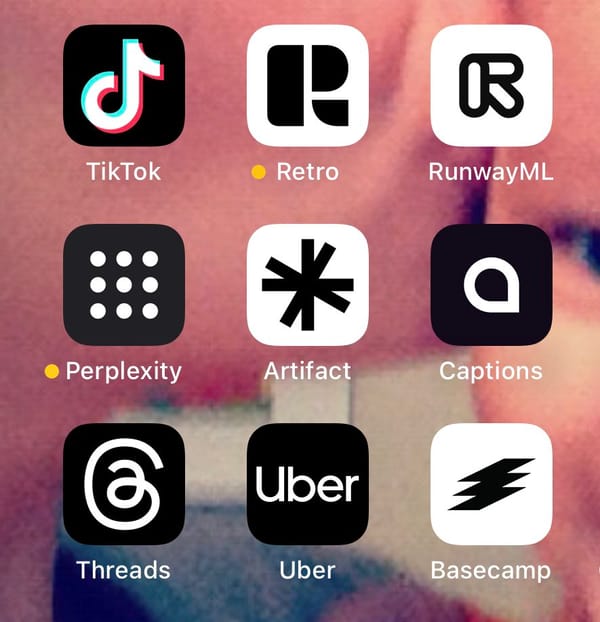User Manual
How to work with me

One thing I consistently get positive feedback on from founders is that I have a User Manual where I share practical tips on how to work with me and what to expect. Rather than keeping it buried in a google doc link, publishing it here.
I wrote my first User Manual when I became a manager years ago, it was a way of helping new hires to understand how to work with me and expedite onboarding (in tech startups speed and time-to-impact is everything). When I was a COO, the User Manual was a great way to bring transparency to my expectations, norms and ways of working. When we make the effort to articulate and bring transparency to how we operate, (which so few people in positions of power do, they prefer the black box approach), the team around us is more productive and anxiety-free.
To me, this is a way of signaling respect and building trust.
I'll tell you how I work. You tell me how you work. We'll both have more context and then we can work more effectively together.
The Investor User Manual that I'm using now is a bit different. It's admittedly less transparent than I'd like given the nature of venture but nevertheless, founders find it useful and that's enough for me. Consider this WIP, it's a living document.
Ann's Investor User Manual
Hi there,
Let’s get to know each other a bit before we Zoom. Investor interactions can often be a black box process. I think that’s unproductive. Your time and my time is extremely valuable, so let’s not waste any. I hope this “user manual” helps you get a sense of my style and what to expect. I’m an operator at heart, so continuing the tradition of an open user manual, before for my teams and now for founders.
About me: NEA profile, follow on Twitter, linktree, website
About NEA. TLDR, multi-stage, generalist investors (Seed->IPO). Typical first check is Seed, Series or Series B, early stage software, infra, consumer, fintech.
Communication and Pitch Meetings:
- Please bring the energy! Zoom is such a fatiguing format. It really helps to bring some joy, enthusiasm, charisma to the format when interacting. I try to do the same. My goal is for our conversations to be energizing and informative, both sides learn something valuable. Never draining.
- I’m direct. I ask a lot of questions. I probably make funny faces on Zoom. LOL. I’m always thinking, how can I help this founder bring key information to the surface in a 30 minute session? I want to make sure that you have a chance to shine and I understand what you are building before I make a judgment call.
- Clear and concise communication is highly appreciated. In the email and in the presentations. I lose patience and interest quickly when things meander.
- Here’s what I look for in an outreach email (what to send in advance):
- 1 short summary paragraph of what you’re building
- 1 bullet on what you’re raising next: round, $, etc.
- 2-3 bullets with data points on our traction, team, etc.
- Pitch deck link
- Bonus points: Loom or other video of your product (short one)
- Help me see the longterm vision, how is the world different when you win?
Feedback
- We have heavy spam filters and I don't read all cold emails. Shoot your shot but you're better off with a warm intro from a mutual.
- Worst thing I can do is to waste your time by taking a pitch that I won’t pursue. A quick NO in my book is a sign of respect for the founder’s time.
- It's OK to ask for it during and after the fundraising process. I try not to overreach with feedback but I’m always happy to share it when asked.
- Outside of the fundraising process (feedback on Series A / B pitch, feedback on product or GTM, if I have the time I'm happy to give thoughts)
- Inside of the fundraising process (e.g. how did that presentation go? what landed and what didn’t? What are the remaining questions?)
- Post-decision. I give some feedback with decisions that's intended to be constructive and actionable. If you need more, just ask. Most founders are inundated with opinions, so I usually keep it simple unless asked.
How to reach me:
- Email: abordetsky at NEA dot com
- Twitter DMs @annbordetsky open.
- Please don’t LinkedIn email me if you have another option. I hardly ever engage via LinkedIn. Connecting after a first meeting is fine.
- Warm intros preferred but not required. Warm referrals are most valuable when we share a strong mutual connection (vs. a loose affiliation). A well-crafter cold email (see above) is also a great way to stand out.
- I do try to respond to my Inbox but sometimes it's too much. Please don’t be offended. It’s never personal. Feel free to nudge w/ 2nd email.
Investment Focus:
- Primarily early stage, that's first checks at Seed, Series A and Series B
- Board Seats at Series A / B
- My investing sweet spots are:
- Generative AI Application Layer
- SaaS / Prosumer / SMB
- High-growth consumer software and platforms
- Consumer Utilities, Social / Viral, Network Effects Products
- Marketplaces: Consumer and B2B
- Climate (AI, Marketplaces, SaaS)
- Generative AI Application Layer
- Big bold bets. I’m always open to visionary tech founders!
- I love working with founders on round construction, bringing in strategic angels and other funds to build a roundtable of value-add investors
Typical diligence process (depends on stage of course) includes:
- Getting to know founders and team, ideally in advance of a raise, and allowing for time and space for founders to get to know me and the broader team
- Reviewing product roadmap and strategy
- Gathering customer validation and interviews
- Financial model review and benchmarking key metrics
- Reference check founders and (when applicable) the key leaders on the team
- Understand competitive landscape and market structure
- ...back to bullet #1. This is the most important. Founder / investor chemistry is key and the relationship can last for many years. It's about people.
Working with founders (post-investment):
- Based on the founder's preferences, we figure out an ongoing cadence to work together. Usually it's a mix of more frequent CEO 1-1s, ad hoc jams as decision points or challenges come up and quarterly board calls.
- Ideally, any founder that I support feels comfortable just picking up the phone for a chat as things come up and it's my goal to be as responsive as possible. Situational advice is what I'm here for and often that's most valuable.
- Things I aim to help with consistently
- Sounding board on product, team building, partnerships, growth, raising. I'll tell you what you need to hear in the nicest way possible but the truth.
- Open doors via my extensive network.
- Amplify product launches and announcements. Awareness matters!
- CEO empathy. Sometimes you just need to talk and that's ok, I'm here to boost you up and chat about whatever's bugging you.
The most important thing
- Founders can and should run a very efficient, competitive fundraising process. I expect that and will move on your time table as much as possible.
- This is a relationship, not a transaction though. I really value getting to know founders in advance and ultimately it's in the best interest of founders to really know their lead investors too, especially when adding to the board.
- I will make the effort to meet in person, grab dinner, whatever. I hope you will too. Coffees and in-person is BACK! woohoo!
Information + Inspiration
- Books to read:
- The Creative Act by Rick Rubin
- Influence by Cialdini
- 7 Powers by Hamilton Helmer
- The Power Law by Sebastian Mallaby
- Amp it Up by Frank Slootman
- Secrets of Sandhill Road by Scott Kupor
- Hard Things About Hard Things by Ben Horowitz
- User Friendly by Robert Fabricant
- High Growth Handbook by Elad Gil
- Scaling People by Claire Hughes Johnson
- Radical Candor by Kim Scott
Was this useful?
- This is a living document. Feedback and suggestions welcomed. Drop me a note if there's anything you think I should add here for context.



